History: What Has Global Politics Achieved So Far?
14 minute read
Updated on: 06 Aug 2021
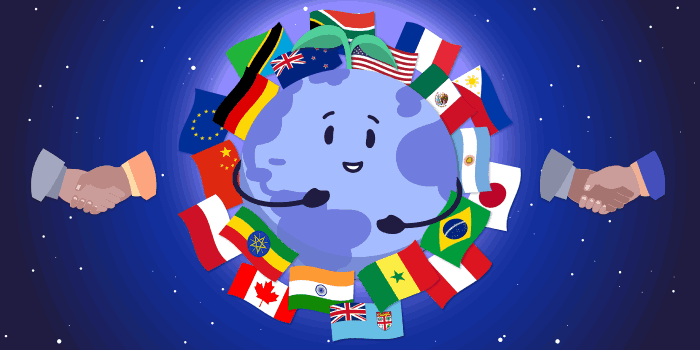
What solutions can global politics provide?
Creating legally binding obligations might seem to make sense given the severity of climate change. However, it’s not always that simple.
Making international obligations legally binding can discourage countries from participating at all, or prompt them to make less ambitious commitments so as not to compromise their independence
.
Given these difficulties, you might be wondering how we can get countries to engage in global politics to help solve climate change! Well, global politics can provide solutions in two different ways :
- Hard approaches, which involve establishing new legal frameworks
- Soft approaches, which may not involve legal obligations
For example, the 2015 Paris Agreement takes a mixed approach of hard law and soft law. It takes a hard approach in that it requires each supporting state to create a nationally determined contribution (NDC), a commitment defined by each state setting out how that country will reduce its own emissions and adapt to the impacts of climate change
.
However, it takes a soft approach to achieve the NDCs because the objectives set out in each NDC are unenforceable . One academic has described this mixture of hard and soft approaches as a crème brûlée
, a pudding consisting of a soft custard layer with a hard crispy top!
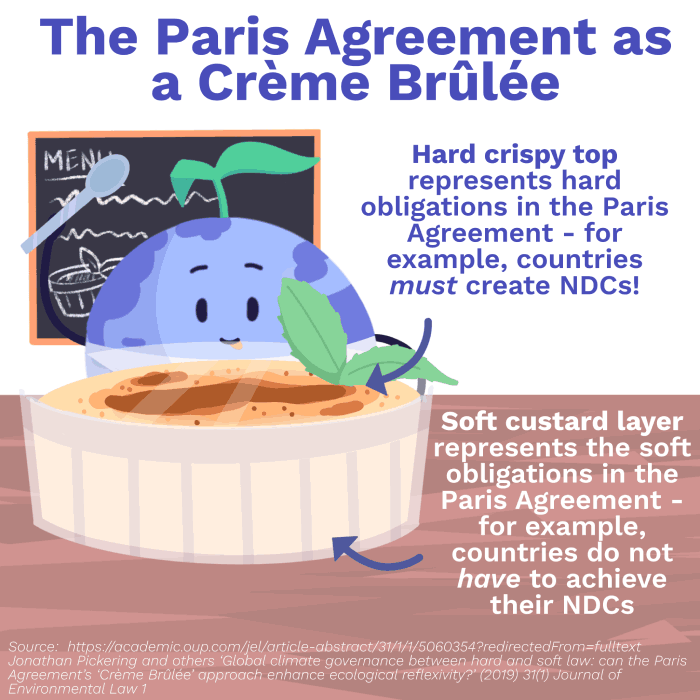
The Paris Agreement has a mixture of hard and soft obligations
Inter-state and transnational approaches
As you have learned so far, global politics is not just about relationships between countries - there are many other players and political relationships involved too .
This means that while solutions will sometimes be agreed upon between countries (an inter-state approach), solutions can also go beyond this to include other measures that transcend the borders of individual countries (a transnational approach) .
In the previous chapter we learned about the importance of non-state players and sub-state players in varied initiatives that are helping to solve climate change - they were examples of a transnational approach to addressing climate change! In this chapter, we will focus more on inter-state approaches.
So, what is a treaty? A treaty is a written agreement between countries that is governed by international law
- so treaties are an example of an inter-state approach. The overarching treaty that aims to address climate change is the United Nations Framework Convention on Climate Change 1992 (UNFCCC)
.
The UNFCCC aims to stabilize greenhouse gas emissions in our atmosphere to prevent dangerous human interference with the climate system and has nearly universal membership - 197 countries are members . The treaty puts the main burden of resolving the climate crisis on high-income countries because they are the source of most past and current greenhouse gas emissions
.
In this chapter, we will look at two other important treaties that have been created within the framework of the UNFCCC 1992 : the Kyoto Protocol 1997 and the 2015 Paris Agreement.
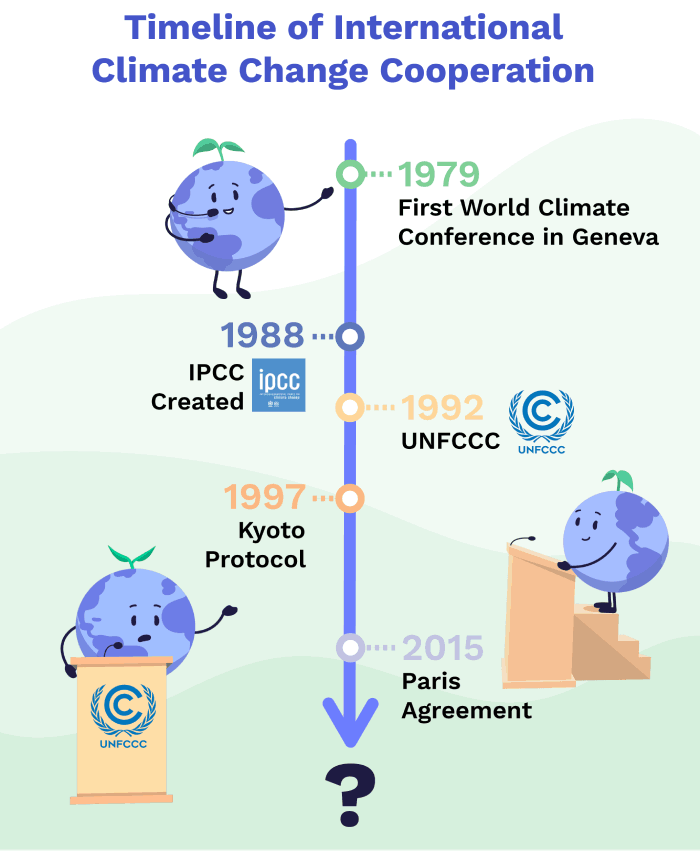
Climate cooperation over time
What was the Kyoto Protocol 1997 and what did it achieve?
The Kyoto Protocol is an important agreement because it was the first agreement committing higher-income countries to reducing their emissions of CO₂ and other greenhouse gases .
To start, these higher-income countries committed to binding emissions reduction targets for 2008 to 2012 . In 2012, parties agreed to take on new commitments for 2013 to 2020
.
Despite the agreement being laid out in 2012, it took until 2020 for enough countries to actually agree to this second set of commitments for them to become legally binding obligations ! Although it is great to see countries working together to address climate change, climate change needs to be addressed quickly!
As well as encouraging signatories to take emissions-reducing measures within their own countries, the Kyoto Protocol created three market-based mechanisms to provide an additional way to meet targets :
- International Emissions Trading under the Kyoto Protocol: if a high-income country has successfully emitted less than their target, they can sell their leftover emission capacity to other high-income countries that have exceeded their targets
. This creates a ‘carbon market’
.
- The Clean Development Mechanism: high-income countries can invest in emissions-reduction projects in low-income and middle-income countries that count towards their own emissions reduction targets
.
- Joint Implementation: a high-income country can invest in an emissions-reduction project in another high-income country that counts towards their own emissions reduction targets
.
These mechanisms allow emissions reduction measures to be set up where they are most cost-effective .
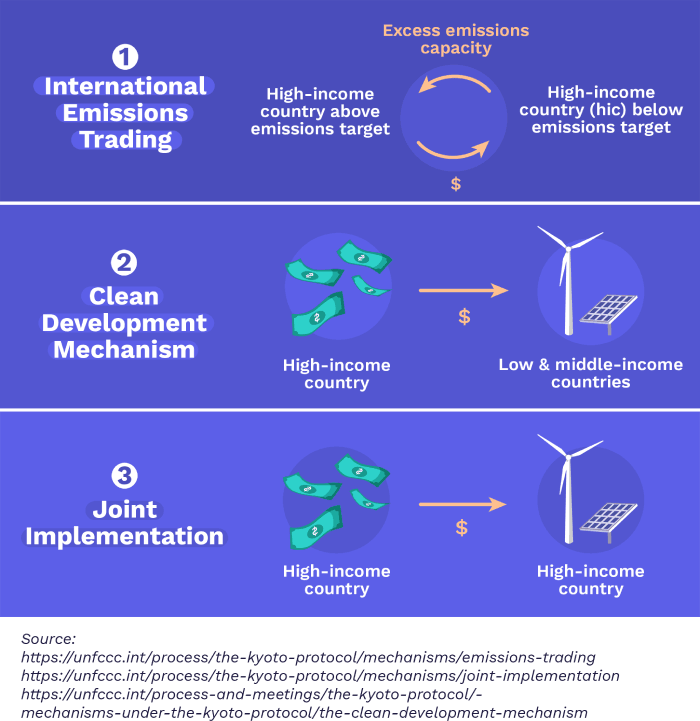
The 3 Market-Based Mechanisms under the Kyoto Protocol 1997
The achievements of the Kyoto Protocol in the first commitment period (2008-2012)
Out of the 36, only 9 countries emitted higher levels of greenhouse gases than they had committed to - however, these countries resorted to the flexibility offered by the 3 market-based mechanisms in order to comply with their obligations . Overall, the parties surpassed their collective commitment by an average of 2.4 GtCO₂e per year
.
But even though high-income countries were able to comply with the Kyoto Protocol, this did not do much to slow the global rise in emissions , as shown in the graph below!
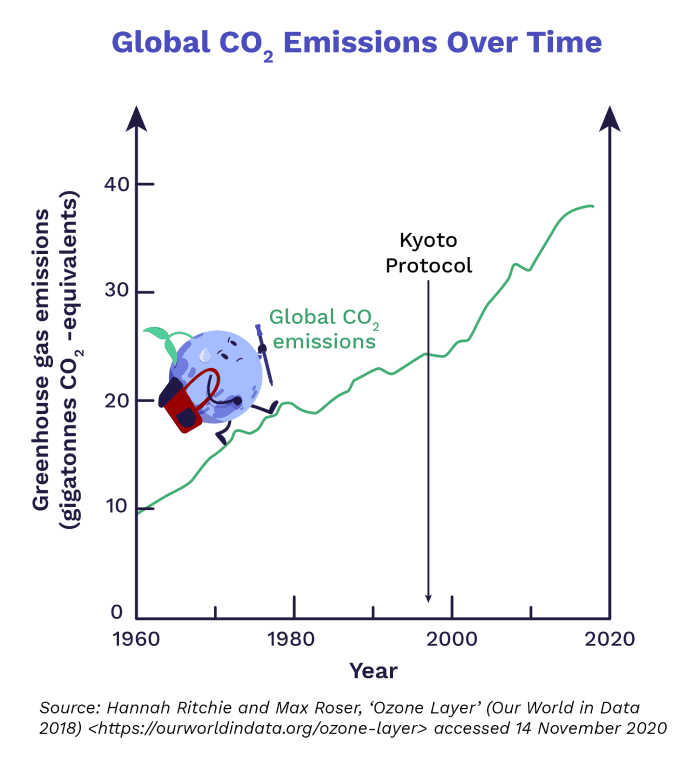
The Kyoto Protocol did not slow global CO2 emissions
In fact:
- Despite the Kyoto Protocol, emissions of the key greenhouse gases (carbon dioxide, methane and nitrous oxide) rose between 1997 and 2015
.
- In 1997, global emissions were 24.4 billion tonnes of CO₂, but in 2011, global emissions were 33.9 billion tonnes of CO₂
.
So, if the Kyoto Protocol achieved its targets in the first commitment period, why then did it do so little to mitigate climate change? There are four key reasons why the Kyoto Protocol achieved its targets without making good progress on addressing climate change:
- Some emissions reductions would have happened anyway due to economic changes in many regions
.
- The US and Canada did not participate in the agreement
. Although the US signed the Kyoto Protocol, President Bill Clinton refused to make it officially valid and binding in the US unless China and other middle-income countries agreed to limit their emissions too
.
- The global financial and economic crisis of 2008 decreased greenhouse gas emissions
.
- Another factor was that some industrial activity was relocated from high-income countries to low- and middle-income countries
. Although a nation may be decreasing their carbon production, they can still contribute to emissions by importing carbon-intense products from elsewhere
.

Western Europe de-industrialised quickly
What potential does the 2015 Paris Agreement have to solve climate change?
The 2015 Paris Agreement is the latest big climate treaty. An important part of this treaty is the agreement to hold global average temperatures ‘well below 2°C’ above pre-industrial levels and to pursue efforts towards a 1.5°C limit . But this is not the only purpose of the Paris Agreement!
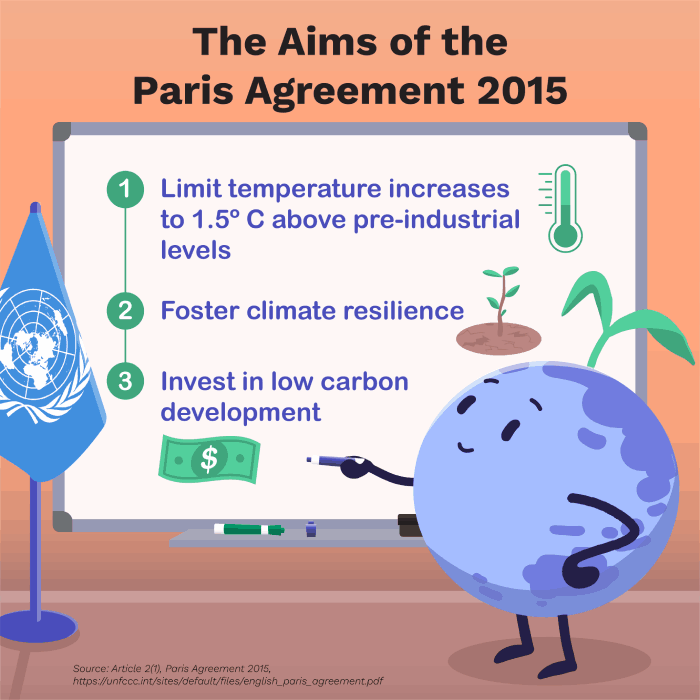
The Aims of the 2015 Paris Agreement
Unlike the Kyoto Protocol, where countries came up with emissions reduction targets together , the Paris Agreement allows countries to set their own ambitions individually through nationally determined contributions (NDCs)
- remember our crème brûlée of soft and hard approaches from the start of this chapter!
NDCs are decided by countries but are subjected to international review , meaning the Paris Agreement is much more flexible than the Kyoto Protocol
.
What’s more, in contrast to the commitments under the Kyoto Protocol, it’s not just the high-income countries that have made NDCs under the 2015 Paris Agreement :
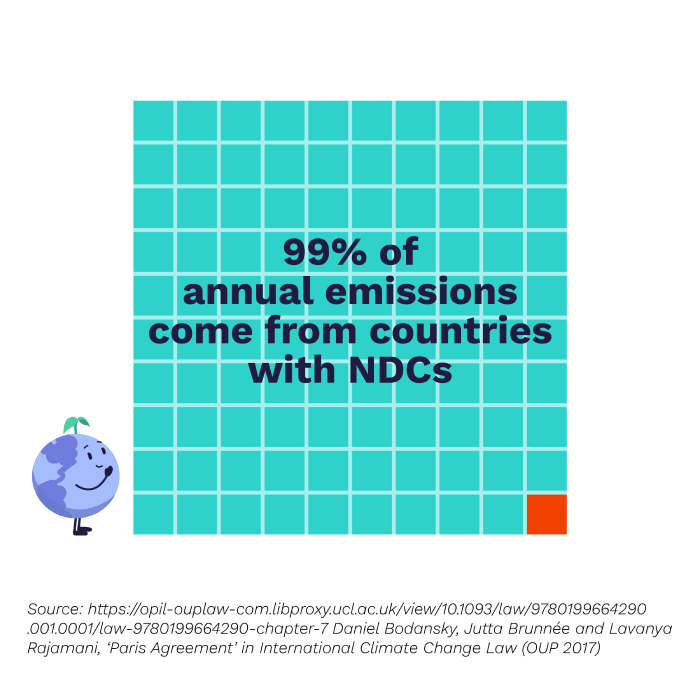
Countries representing 99% of global emissions put forward their intended climate promises (NDCs) by January 2017
However, while the flexibility of the 2015 Paris Agreement seems to have encouraged more countries to sign up, it is yet to be seen whether this will actually translate into greater emissions reductions in practice!
Now for the big question: is it realistic for the Paris Agreement’s approach to achieve the 1.5°C - 2°C aim?
So far, it is hard to tell and the picture is mixed…
Current NDCs are insufficiently ambitious to achieve the aims of the 2015 Paris Agreement . Why?
Well, each state has created its NDC without any consideration of whether the target represents a fair effort in a global context and without consideration of the ambition that each state needs to show to collectively ensure that the overall average global temperature increase remains within 2°C .
What’s more, achieving the 1.5°C limit would have difficult implications for countries like India that still face widespread poverty . This is because, up to a certain point, energy use (especially electricity) is closely coupled with a country’s economic development, including better health, education, and living standards
. Thus, the NDCs of many lower-income countries are conditional on receiving international financial and technical assistance to move forward on their path of sustainable development
.
This could prove to be problematic as there is currently no scientific nor political agreement on current and projected climate adaptation costs at a global scale .
The good news is that the 2015 Paris Agreement has a framework for improving NDCs over time . However, it is unclear whether gradually increasing the ambition of NDCs over time will enable sufficiently rapid change to keep to our temperature targets
.
That’s pretty far from the 2015 Paris Agreement’s target! If we want to stick to this limit, we need emissions to reduce by 7.6% every year over the next decade .
The Paris Agreement also lacks enforcement machinery to make sure that countries comply with their NDCs . However, it does have some solutions to this:
- Every 5 years, a ‘global stocktake’ will occur to assess the collective progress towards the Paris Agreement’s long-term goals
.
- A transparency framework aims to hold countries accountable through peer and public pressure
.
A final note of concern: the Paris Agreement fails to explicitly signal the phasing out of fossil fuels or fossil fuel subsidies, although its goals do implicitly signal these things .
What was the role of non-state players and subnational governments in the Paris Agreement?
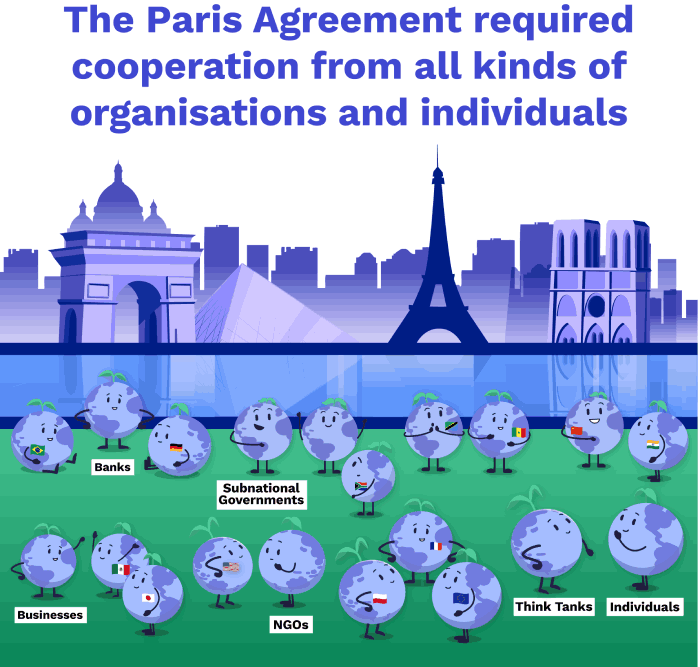
Players important to the 2015 Paris Agreement
Most experts believe that non-state players and subnational governments were important in generating momentum prior to the Paris Agreement which countries were then reluctant to disrupt .
The preparatory meetings for creating the 2015 Paris Agreement involved varied players like business leaders and NGOs, not just countries . At the national level, subnational governments and non-state players were important in shaping NDCs in some countries, like Chile and India
.
At the Paris summit, governments recognised the importance of these other players. For instance, governments appointed ‘High-Level Champions’ to mobilise additional actions from subnational governments and non-state players .
All of this shows that, while the Paris 2015Agreement is an agreement between countries, many other players were critical in developing and shaping this historic treaty.
What hope is there for the future of global climate politics?
It is important to remember that countries are not the only players in global climate politics - non-state players and sub-state players also play an important role .
To understand what hope global climate politics has for the future, we need to understand the current limitations on politics as a tool to solve climate change - this is what you will learn about in the final chapter of this course!
Next Chapter